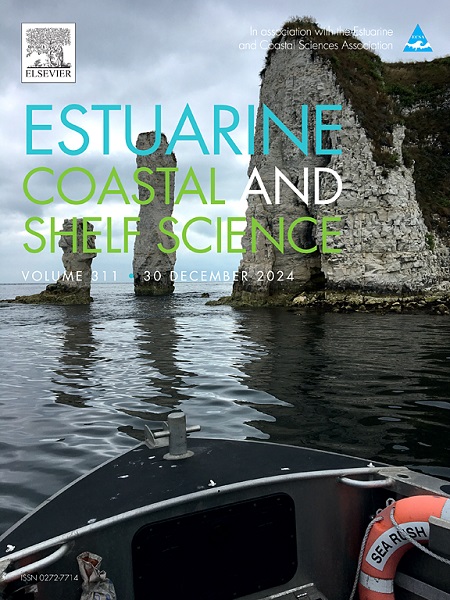Macroalgal diversity drives abundance and richness of amphipod community
IF 2.6
3区 地球科学
Q1 MARINE & FRESHWATER BIOLOGY
引用次数: 0
Abstract
Biodiversity loss is a process that has accelerated in recent decades. In this scenario, the loss of habitat-forming species is of great concern since they facilitate the occurrence of other organisms. These habitat-forming organisms facilitate the occurrence of other species by providing new habitats or increasing the complexity of existing ones. Also, they can minimize adverse abiotic conditions and negative interactions and, thus, their presence allows for the development of an abundant and diverse associated fauna, such as amphipod species. Amphipods have an intimate relationship with macroalgae and can use macroalgae as shelter and food. Marine macroalgae have been under strong decline in abundance and diversity, mainly due to climate change. The loss of diversity of host macroalgae means the loss of the facilitation process that these organisms perform, potentially affecting associated amphipods. Thus, the aim of this study was to investigate how the loss of habitat-forming species affects the associated fauna. Specifically, the questions are (1) What is the effect of host macroalgal diversity on the amphipod assemblage? (2) What is the relative importance of richness and identity of host macroalgae for the amphipod assemblage? To answer these questions, a field experiment is conducted to manipulate the richness of host macroalgae (Dichotomaria marginata, Padina gymnospora, Sargassum filipendula) on a subtropical rocky shore (Ubatuba, SP, Brazil). Treatments ranged from monoculture to polycultures, combining additive and substitutive designs. The polyculture treatment harbored higher amphipod abundance and richness than monocultures and had a unique assemblage composition. These results were attributed to the richness, but not to the identity of host macroalgae. This pattern was observed in additive and substitutive experimental designs performed. Moreover, an overyielding of the polyculture relative to that expected from the individual contribution of the monocultures (Dt > 0) and based on the yield of the best monoculture (Dmax>0) is observed, indicating a complementarity effect. These results show that more diverse substrates provide a greater variety of resources (e.g. habitat and food) than monospecific substrates, harboring a richer associated fauna. Therefore, the importance of maintaining the diversity of host macroalgae for the associated faunal community should be emphasized.

求助全文
约1分钟内获得全文
求助全文
来源期刊
CiteScore
5.60
自引率
7.10%
发文量
374
审稿时长
9 months
期刊介绍:
Estuarine, Coastal and Shelf Science is an international multidisciplinary journal devoted to the analysis of saline water phenomena ranging from the outer edge of the continental shelf to the upper limits of the tidal zone. The journal provides a unique forum, unifying the multidisciplinary approaches to the study of the oceanography of estuaries, coastal zones, and continental shelf seas. It features original research papers, review papers and short communications treating such disciplines as zoology, botany, geology, sedimentology, physical oceanography.

 求助内容:
求助内容: 应助结果提醒方式:
应助结果提醒方式:


